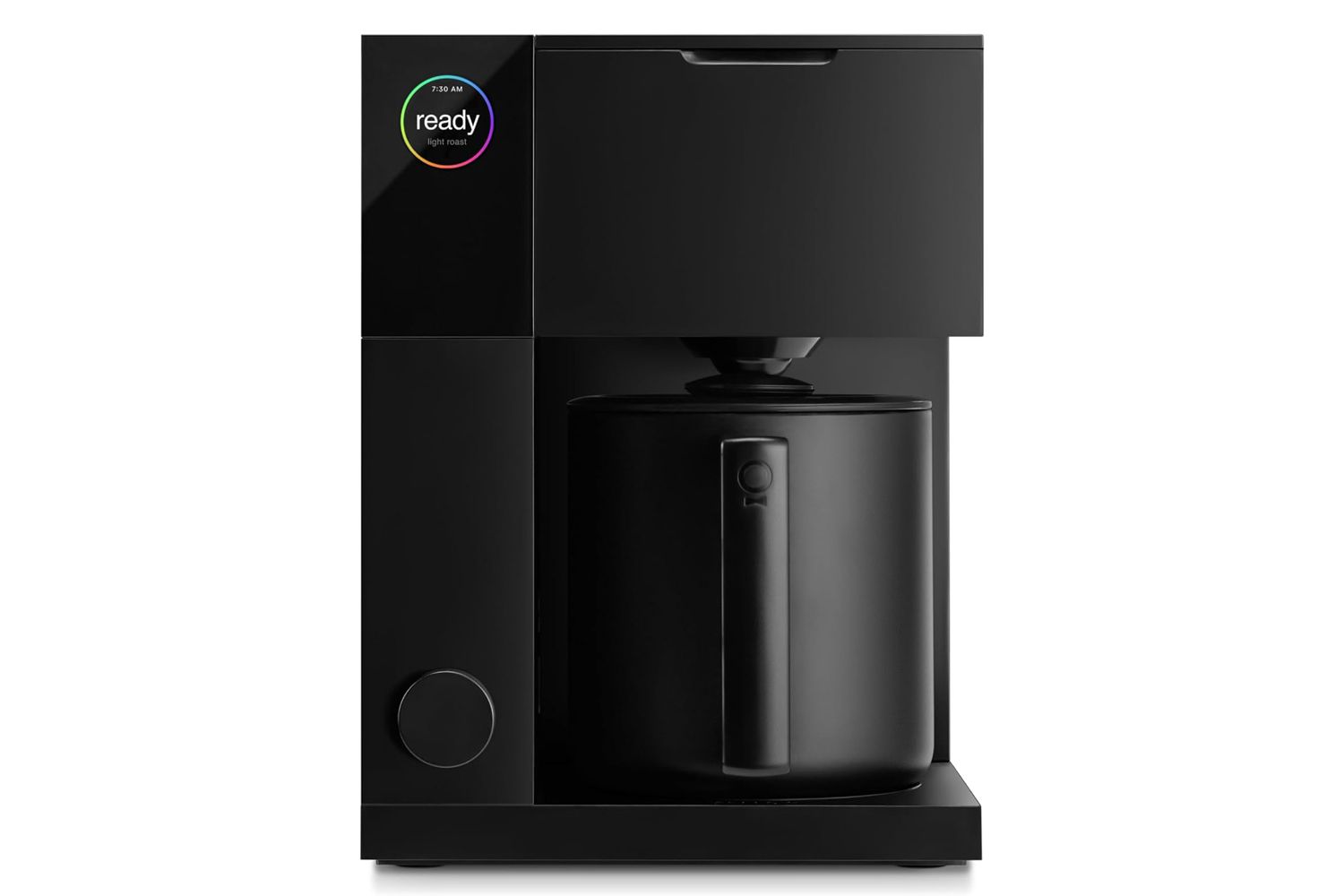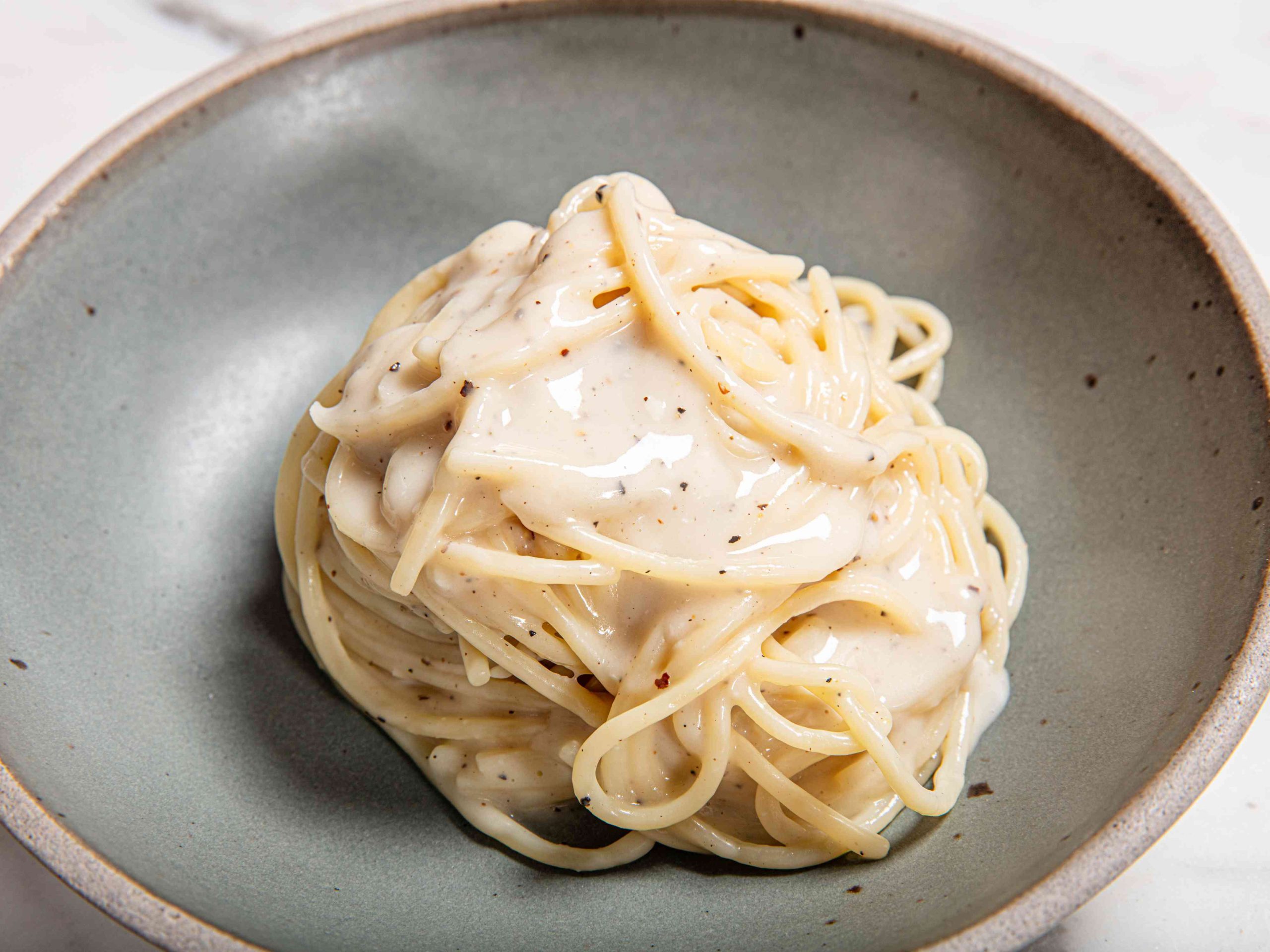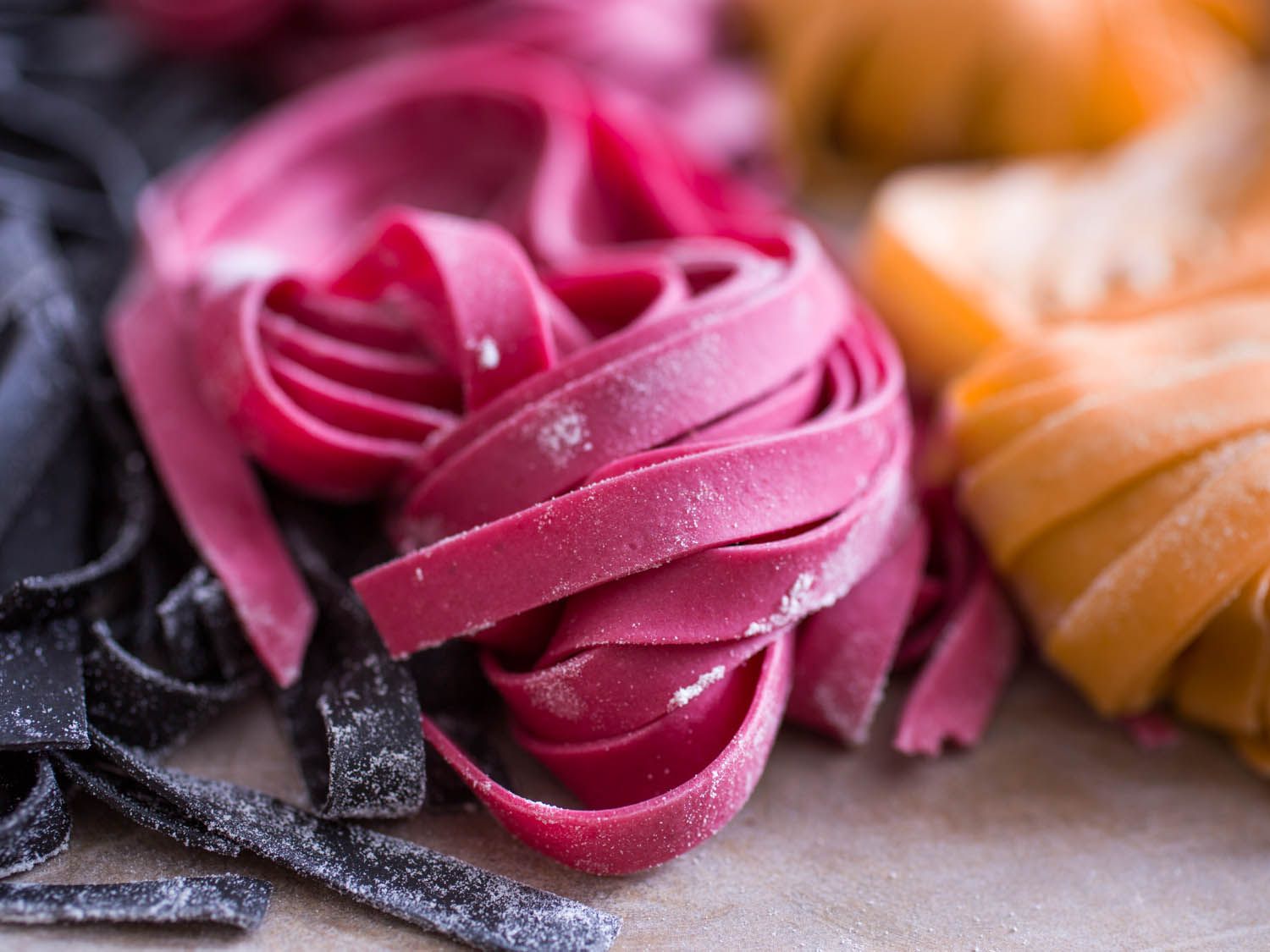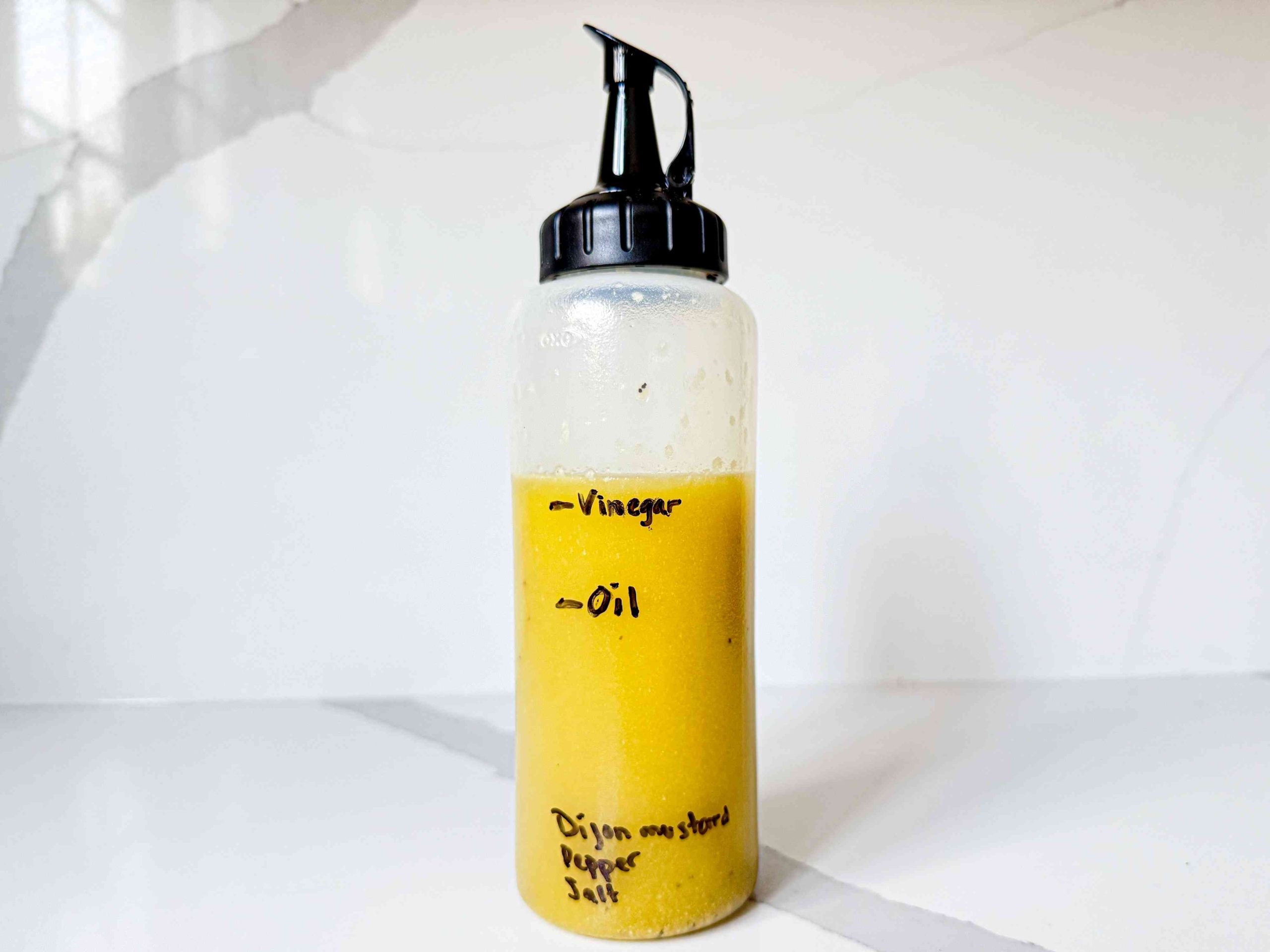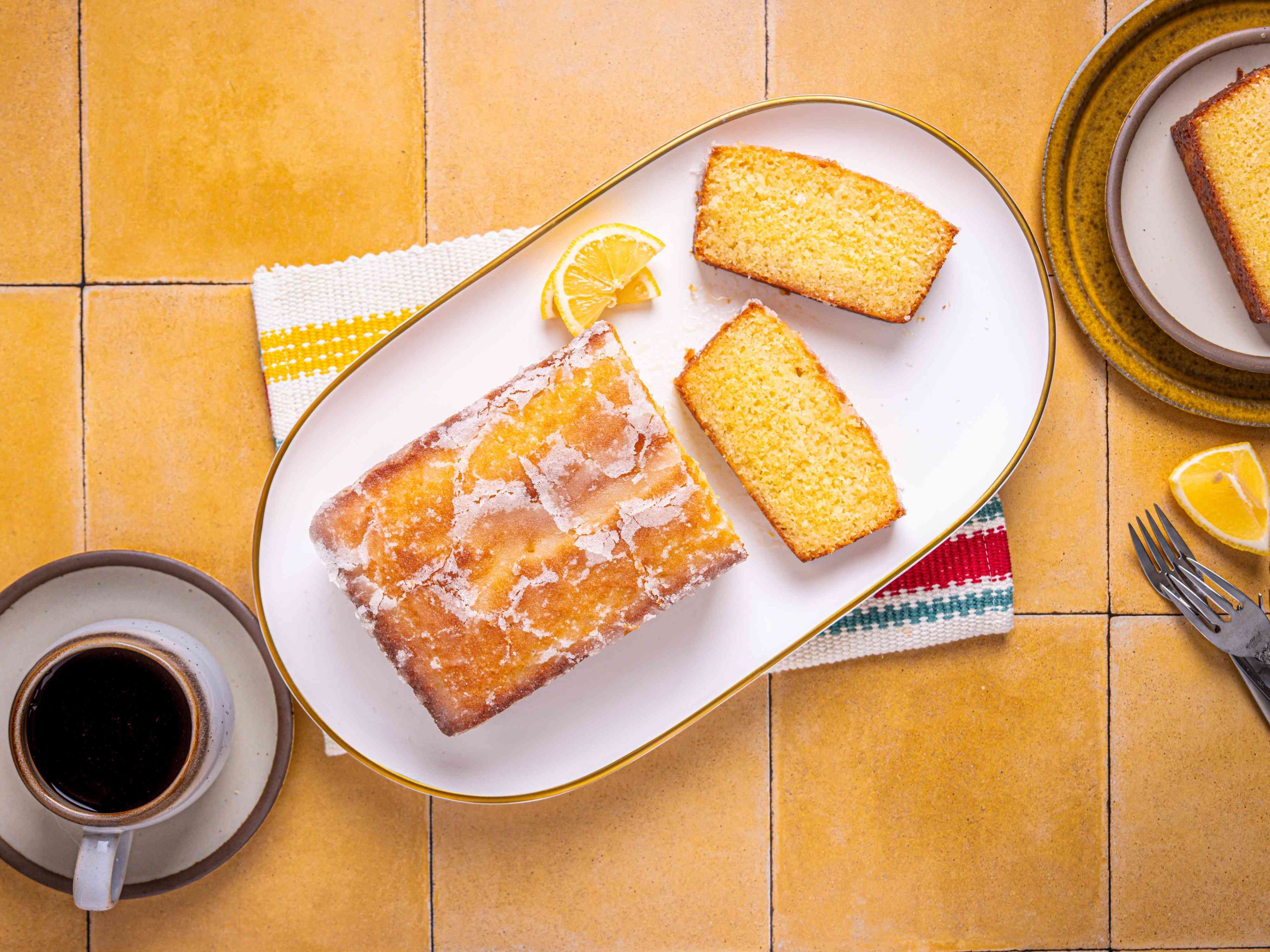A few years ago, while testing coffee makers for Serious Eats, I learned how easily poorly designed machines make bad cups of joe. Back then, I worked with a barista who brought in a refractometer to measure the coffee’s total dissolved solids (TDS), and we chatted about temperatures, brew times, and extraction. It was all very technical. While I’m not a coffee nerd—I may only detect one or two of the tasting notes that roasters slap on bags of beans—that testing convinced me to switch to the pour-over method at home. I became leery of a coffee maker’s water heater and pump.
Water volume and temperature are where many coffee makers fall short. Miss those marks and you can end up with a weak brew or one with off flavors, even with freshly ground beans. Mechanical mistrust is why each morning I fuss with pour-over. Poring over all the variables, I make coffee that’s better than any coffee maker in my price range. AI might be taking over, but I’ve yet to use a machine that meters out water more accurately than a human with a kettle, a scale, and a few minutes of time.
But while a pour-over is accurate, it’s also slow and requires hands-on time. Those are not traits most folks love dealing with first thing in the morning. That’s what Aiden’s aiming to fix.
After a couple of weeks of twice (and sometimes thrice) daily brewing, I’m confident this coffee maker will earn a spot on the counter of even the pickiest of pour-over aficionados.
The Tests
Serious Eats
- Single-Cup and Batch Brew Taste Test: I brewed coffee in two volumes: a single-serve 300-milliliter/10.1-ounce cup and a 750-milliliter/25.4-ounce carafe, using the same medium roast beans and 1:16 ratio. Then I tasted them for consistency and repeated this test three times.
- Head-to-Head vs. Pour-Over Test: Using the same amount of water (240 milliliters/8.1 ounces), freshly ground coffee (15 grams), and cone-style filters, I made mugs using the standard pour-over method and the Aiden, following the machine’s total brew time. After brewing, I took the temperature and weight of the coffees and then tasted them to compare. I repeated this test three times.
- Temperature Holding Test: I brewed 473 milliliters/16 ounces of coffee into Aiden’s insulated carafe. I measured the initial temperature and the drop after an hour using an instant-read thermometer.
- Volume Test: Without any grounds added, I set Aiden to use 300 milliliters/10.1 ounces of water and brewed into a measuring cup. Then I weighed it and noted any discrepancies.
- Use Test: During testing, I fiddled with, and noted, all the options on the Aiden, made custom brew profiles, edited settings, and cleaned the brewer.
What We Learned
Out of the Box, the Setup Was Pretty Quick
Once you plug the machine in and adjust a few settings, including your elevation (fancy), you’re ready to start brewing. The smartphone app pairs quickly and while it didn’t offer much functionality, Fellow plans to add scheduling and remote control.
Before brewing you have to pick between two plastic baskets depending on how much coffee you’re making: a #2 Melitta cone filter for a single serving up to 15 ounces, or an 8- to 12-cup flat bottom basket filter for batch brewing up to 50 ounces into the carafe. Next, you adjust a switch under the lid, which controls the shower head. Rotate it to the green dot for a single serve and Aiden pushes the water through the three central nozzles. Flip it to three blue dots for batch brewing and all 15 ports are put to work. Aiden alerts you with screen prompts if you have the wrong basket or shower head setting for the amount of coffee you want, as it does if you’re low on water.
It Was as Exacting as Doing a Pour-Over Yourself
Serious Eats
Fellow uses the term “precision” in Aiden’s product name and the engineering backs it up (even if the coffee maker is likely trying to achieve accuracy, not precision). The settings menu allows for metric or imperial measurements. Using Aiden’s Guided Brew setting, once you dial in how much coffee you want, the machine crunches the water-to-coffee ratio for you, showing you how much coffee to add, either in grams or tablespoons.
Aiden considers one cup to be five ounces (150 milliliters). When set to metric, the screen displays the size of your drink and the amount of grounds required in milliliters, grams, and cups. In imperial mode, Fellow shows your choice in cups, tablespoons, and ounces. You can adjust Aiden’s variables in increments of 0.5 milliliters, 0.5 ounces, or, when it comes to temperature, 0.5 degrees. While I’m all for metric, when heating water for a pour-over I use Fahrenheit. As of now, Aiden doesn’t offer separate settings for temperature scales so there was a lot of “Alexa, what is 206º Fahrenheit in Celsius?” during testing.
The Aiden Did an Excellent Job Heating and Pumping Water
Fellow’s level of detail might sound fussy, but it works. I wanted to see how it stacked up to my pour-over routine. I programmed a custom brew cycle in Aiden, skipping the bloom option, which would be difficult to mimic accurately. For 240 milliliters of coffee, just over eight ounces, Aiden’s brew time is 2:50. But only about 1:18 of that is active brewing—where you hear water pumped into the brew basket—the remainder of the time, you’re waiting for the last drips to fall into the cup. For each brew method I used the same volume of water (I use a scale for pour-over), amount of beans, water temperature, and active brew time, with a 16:1 water-to-coffee ratio. Then I checked the temperature of the results, weighed the coffees, and tasted both.
The results were nearly identical. My pour-over cups averaged about two grams heavier (that’s less than the weight of a penny) than Aiden’s. The temperatures—usually around 170ºF—were very close, with Aiden running a touch hotter. When I tasted the coffees, they were similar, with a pleasing amount of acidity, a balanced flavor with some chocolate notes, and a nice, roasty aroma. The taste was impressive and I’d welcome having that quality with the push of a button or two.
That test proved Aiden uses the correct volume of water to make a single cup of coffee, but I was curious about larger batches. I brewed 300 milliliters of water, or 10.1 ounces, into a basket without any coffee or filter, then weighed the result: 291 grams, a 3% change. Is Aiden as accurate as a human? No. However, I couldn’t detect any flaws in the final coffee when I tasted larger batches.
The Carafe Kept Coffee Pleasingly Warm
Serious Eats
Users usually only notice a carafe when it’s poorly designed. While the Aiden has some plastic elements on the handle and lid, the carafe works well, pours easily, and is a snap to clean. It also keeps the temperature well enough that the second cup from a larger pot will still be nice and warm. In my testing, where I measured the temperature of the brew when it finished brewing and again an hour later, Aiden’s carafe consistently lost about 30 degrees. An hour later, a second cup of coffee was about 139ºF, which is at the higher end of the temperature scale most experts suggest for coffee drinking. That said, it didn’t keep coffee as hot as other coffee makers with thermal carafes, like the Ratio Six.
The Aiden’s Customization Was Unparalled
Out of the box, the Aiden comes with eight different profiles for light, medium, and dark roasts, along with cold brew and a handful for specific coffees from brands like Onyx and Verve. These all have different programmed water temperatures, ratios, and bloom temperatures and times based on Fellow’s testing. For example, if you pick the light roast option, Aiden heats water to 210.2ºF, with a bloom that pumps that same temperature water over the grounds during the first 45 seconds, using a 17:1 ratio. But if you pick a dark roast, Fellow uses two temperatures, 210ºF to bloom followed by 185ºF to brew the rest of the way, with a shorter bloom duration and a 16:1 ratio.
You can adjust all of these factory presets. But what’s more exciting is the ability to program a recipe. A custom brew lets you adjust water temperatures and ratios, which range from 14:1 to 20:1. Coffee geeks will appreciate the versatility of the bloom section. Here you can turn the feature on or off, adjust its ratio, as part of the overall volume of water, and tell Aiden how long you want the bloom cycle to take. How’s this for specificity: You can set the coffee maker to push out up to 60 bloom pulses into a carafe of coffee, each with a specific temperature.
Most coffee drinkers are never going to need that level of detail. But, practically speaking, the custom feature is ideal if you have a pour-over ratio and technique you love and want to program Aiden to have it do the work for you.
The Guided Brew Feature Was Very Handy
Serious Eats
Those eight presets I mentioned above all live within Aiden’s Guided Brew menu, offering a nice bit of hand-holding. While a customized brew profile is nice for more experienced coffee drinkers, most folks simply want a good cup of coffee without much effort—that’s what you’re signing up for with a coffee maker, isn’t it? The Guided Brew feature means that with about four clicks of Aiden’s button, you’re making pretty damn good coffee.
Hit Guided Brew, then pick one of the eight roast settings and click. Now spin the wheel to tell Aiden how much coffee you want to make. As you increase the size of the cup, the screen tells you which of the two brew baskets to insert; then click again. Aiden considers everything from 150 milliliters/five ounces/one cup up to 450 milliliters/15 ounces/three cups to be a single serving, which you can brew directly into a cup or mug. Anything over 450 milliliters/three cups, to the maximum of 1,500 milliliters/50 ounces/10 cups, is a batch meant for the carafe. Aiden’s build allows for cups or mugs up to about 6.5 inches tall to take the place of the carafe. After you select the size, Aiden shows you how much ground coffee to add. Add that and the next click starts the brew cycle with a countdown timer.
Because each of the factory-loaded settings includes a bloom cycle, brewing can range from about 3.5 minutes for one cup/150 milliliters to just over 11 minutes for 10 cups/1,500 milliliters. I found Guided Brew to be very intuitive to use, and I even asked my 13-year-old to make a batch of coffee following the on-screen prompts and it went off without much issue. I can’t imagine any parent turning down the luxury of teaching a child how to make great coffee at a moment’s notice.
The Instant Brew Feature Was…Confusing
Aiden’s Instant Brew feature works like a regular coffee maker: pour in the water, dump in the grounds, hit a button, and the appliance starts working. While Instant Brew was designed as a “one-touch experience,” and it works as you’d expect, I don’t know how many folks will find it useful.
This mode leaves you on your own. Push the button, and depending on the brew basket you’ve inserted, Aiden’s going to use up to 15 ounces for a single serve, or the whole 50-ounce water tank for the carafe. If you have the incorrect amount of grounds in the machine—without Aiden showing you how much to add—you might be disappointed. I think those buying the Aiden welcome the guidance of picking a size and knowing how much coffee to add.
Luckily, Fellow builds in a workaround: You can edit the Instant Brew setting so it adopts the software’s attributes for light, medium, or dark roasts. You can also customize Instant Brew to specify a certain volume, following a 16:1 ratio. For example, say each morning you want to make 24 ounces of coffee—even if you have 50 ounces of water in the tank—and you know that volume calls for four tablespoons of grounds that you’ll load in. Then you could press Instant Brew and it will go to work, guaranteeing a consistent cup.
The Verdict
The Aiden produces an outstanding cup of coffee. While the menus and submenus might sound intimidating, the programming is versatile enough to indulge a coffee snob’s whims while also being simple enough to use with bleary eyes first thing in the morning. For those who simply want great coffee to start the day, it should only take a couple of hours to dial in a recipe you like. Then you can start the routine of auto-loading in a set amount of grounds. But for those who love pour-over but want an easier solution, this is a great option—and it can also indulge your interest in adjusting bloom times.
While it wasn’t a huge focus of the testing, Aiden also makes tasty cold brew. That setting calls for a stiff, 14:1 ratio of coffee to water, with a bloom of 210ºF water before spending the next 90 minutes brewing with room temperature water.
The Pros
It’s easy to set a recipe and make pour-over-quality coffee with the push of a button. Since my initial testing, I’ve programmed my preferred pour-over recipe into Aiden (a 15:1 ratio, with a 30-second bloom, and brewed at 206ºF), and put my Fellow kettle in a cabinet. Really now all I need to remember is to add the correct amount of coffee grounds, and with the push of a button, I’m a couple of hands-off minutes away from a great cup of coffee. On the other hand, if you’re into coffee subscriptions that vary in roast styles, the Aiden is flexible enough for you to tweak things cup to cup.
The Cons
While the footprint is a tidy 9 x 9 x 12 inches with the brew basket lid open, Aiden is 18.5 inches tall, which might not fit under your cabinets. And in instances where it does fit, dealing with pouring in the grounds might be tricky. My biggest pet peeve with Aiden’s design is the water tank. The lid has two hinges that feel like they might break easily, unlike the brew basket’s cover, which securely closes with magnets to compress the silicone gasket around the shower head that prevents steam from escaping and ruining the underside of any cabinets above. The water tank’s opening is a narrow slot, and most of the real estate goes to the molded handle, leaving only a pair of 2 x 0.75-inch openings on each end to pour in water. It’s easy to make a mess filling it up.
While I expect the app’s utility to increase, right now it doesn’t offer much. To do simple things, like name a custom brew, you have to scroll along and click individual letters. The screen, while bright and easy to read, is just under 1.5 inches wide and kind of small.
Key Specs
- Materials: Food-grade, BPA-free plastic, stainless steel, and silicone
- Connectivity: Through WiFi via an app
- Cord length: About 37.5 inches
- Size: 9 x 9 x 12 inches (closed), 18.5 inches tall when open
- Weight: 9 pounds, 14 ounces with carafe
- Water capacity: 1.5 liters/50.7 ounces
- Single-serve sizes: From 5 ounces with 10.7 grams/2 tablespoons of grounds to 15 ounces with 32.1 grams/6.5 tablespoons of grounds
- Batch-brew sizes: From 16 ounces with 34.2 grams/7 tablespoons of grounds to 50 ounces with 82.5 grams/16.5 tablespoons of grounds
- Warranty: A 2-year standard warranty, or a 3-year warranty with registration
Serious Eats
FAQs
Does the Fellow Aiden grind coffee?
No, the Aiden does not come with a grinder. You’ll need to buy one or stick with high-quality, freshly ground coffee.
Does the Fellow Aiden have a built-in scale?
No, the Aiden does not come with a scale. While it will provide the amount of coffee needed in grams, it also expresses it in tablespoons. A scale is not necessary, but it would be helpful.
Why We’re the Experts
- Sal Vaglica was the equipment editor for Serious Eats. He now writes for the site.
- For this review, he made cup after cup—and carafe after carafe—of mostly medium-roasted coffee.
Editor’s note: We received a press sample of the Fellow Aiden, but all of our opinions are our own.
2025-01-24 21:00:00
#Fellow #Aiden #Coffee #Maker #Review


